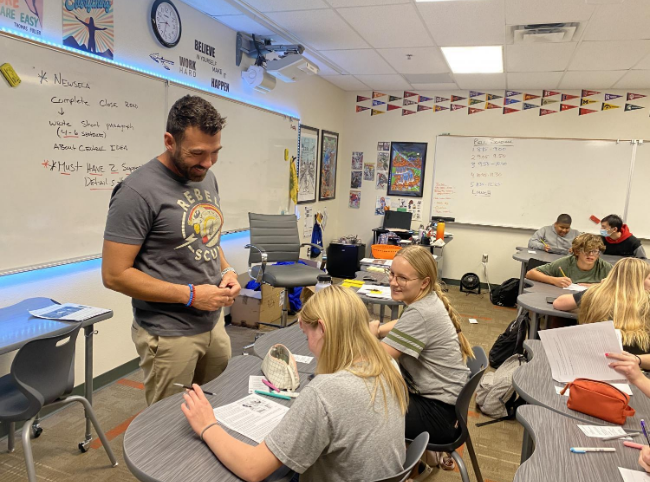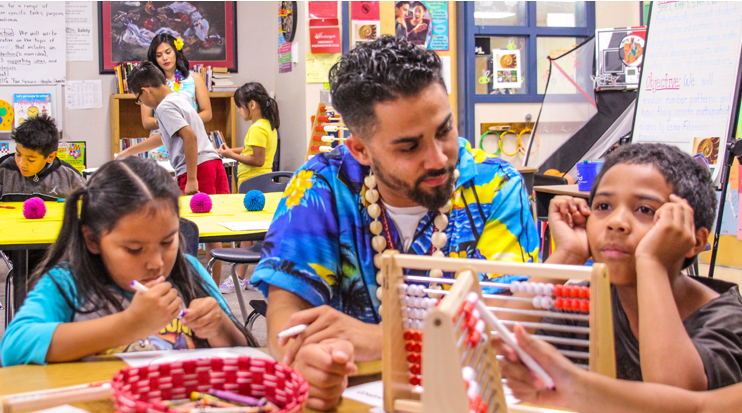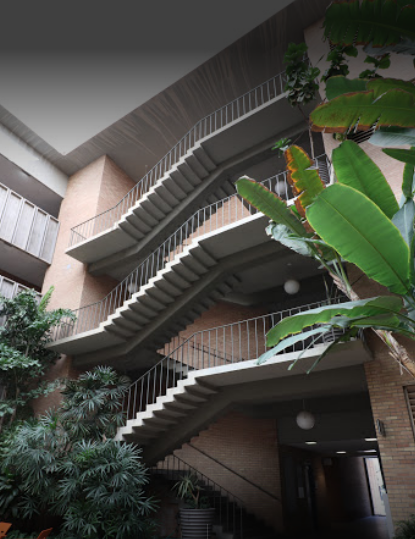
Editor’s note: Today, reimaginED brings you the first in a three-part series on how the nation’s most innovative teaching colleges are preparing education majors to enter, and more important, stay in the field. We begin with the Mary Lou Fulton Teachers College at Arizona State University, ranked as the nation’s 12th overall best teachers’ college in U.S. News & World Report’s 2023 survey. The university has 4,833 students, the largest among all universities ranked, and reported $73.5 million in funded education research.
Teachers are expected to assume many roles. In a single day, a teacher must be an expert on content as well as pedagogy – also known as the practice of teaching – a social worker, a bus loop monitor, a role model, a data analyst, a trauma interventionist, and the sole classroom manager for 30 students.
In other words, all things to all students, all the time.
It’s no wonder teachers are retiring early or transitioning to other professions. According to the U.S. Department of Education, 35% fewer college students chose to major in education between 2011 and 2016. A Center for American Progress analysis of data collected by the Department discerned a 28% decline in students completing teacher preparation programs from 2010 through 2018.
Carole Brasile, dean of the Mary Lou Fulton Teachers College at Arizona State University and co-author of an article about the mounting teacher crisis published in the newsletter of the American Association of School Administrators, has a specific concern.
“More disturbingly,” Brasile wrote, “for some time we have seen that most new teachers leave the profession within three years.”
At the same time, schools continue to produce the same, often disappointing outcomes.

Leaders of teacher preparation programs at Arizona State believe those two situations are linked. Recruiting more teachers and training them better will not solve the problem, they say. Only a redesign of the profession, the workplace, and how education majors are prepared for both will improve outcomes for students and teachers.
That’s the purpose behind Next Education Workforce, an ASU initiative launched five years ago that aims to craft a better future for educators, many of whom are graduates of ASU, and more personalized learning for students. The models are now in place at 27 of the state’s schools.
“Education, in general, is broken,” said Randy Mahlwein, assistant superintendent for secondary education at Mesa Public Schools and the district’s liaison to Next Generation Workforce, which involves 19 of the district’s schools, many of which are Title 1 eligible based on high numbers of low-income students. “The archaic way we designed education and implemented it over the last hundred years was designed and created for a different workforce than exists today.”
Mahlwein added that putting unrealistic expectations on a teacher and then measuring progress by annual high-stakes testing, where scores are driven by economics, is inherently unfair.
“If they had put a time frame on Thomas Edison to invent the light bulb, and then measured all his failures and discredited him to a point where he would have been washed out of the industry, he would have never invented the light bulb,” he said.
Arizona State’s Next Education Workforce program has replaced the traditional “one-teacher-one-classroom” model in Mesa schools with a teams-based model. While team teaching isn’t new, Mahlwein said, the ASU program’s models are different.
“Those (earlier) teams were working in isolation from students,” he said. “This is more wrapping teams that distribute expertise around teams of students without the limitation of time.”
At Westwood High School, for example, about 900 ninth graders are distributed across six teams. Each team shares about 150 students and is comprised of at least three certified teachers and a lead teacher, who both instructs and manages the classroom.
Other educators join the core depending on students’ needs. Their roles include special educators, teachers of English language learners, teacher candidates who are completing residencies, and paraeducators.
The models, which vary from school to school, entail “collaborative and interdisciplinary work during instructional time, as well as before and after it,” according to Basile and Brent Maddin, the program’s executive director. Planning periods are also collaborative, with daily common planning time that allows teachers to create cross-curricular lessons, discuss student work and design personalized experiences for each learner.
Instruction incorporates project- and inquiry-based learning to allow students to learn more deeply. Teachers are joined by community partners who also serve as team members. Gone is the traditional bell schedule.
Sometimes, large groups of students meet with all four core teachers for instruction, and other times they break out into small project-based groups based on student interest and teacher expertise.
In a project on the United Nations, for example, teachers work with students as they survey the globe brainstorming for ways to improve challenges.
Those challenges could touch on food or clean water, Mahlwein said. The teachers weave the standards of science, history and English into the lessons and present a bell-free three hours of instruction.
“Kids can be seen moving through the doors from classroom to classroom,” he said. “The learning is very much student-based, and everyone’s working at their own pace, with a little bit of voice and choice.”
Yet it’s no free-for-all, Mahlwein said. Teachers work within boundaries, and their students do, too.

While teachers at participating Mesa schools are at various stages of introducing the Next Generation Workforce program, they all are honing their skills in specific areas as determined by leaders at Mary Lou Fulton Teachers College. Those areas, as studied in order, are:
- Exploring: System, school and teacher leaders learn more about Next Education Workforce models through information sessions, reviewing resources and school visits.
- Launching: A small number of Next Education Workforce teams are piloted in schools where there is high likelihood of early success.
- Expanding: Schools commit to moving toward whole-school Next Education Workforce models and add teams as readiness and resources permit. Early success inspires other schools in the system to explore and launch team-based models.
- Sustaining: Schools have Next Education Workforce teams schoolwide and further refine how they support students and educators. Team-based models begin to scale systemwide.
So, how is this transformational way of training teachers working?
Arizona State leaders say early results from the pilots are showing fewer student referrals, suspensions and failed classes in secondary schools and better reading and math scores and attendance rates at elementary schools. Parents are asking for the new models to be schoolwide, and teachers are asking to be assigned to teams.
Meanwhile, the university is working with its school partners to develop a research agenda to generate evidence-based knowledge about the relationships between the models and outcomes for teachers and students. Leaders have contracted with Johns Hopkins University to serve as an external evaluator and research early implementation and impact of Next Education Workforce models.
“Ultimately, we need to prove we’re right about this,” said Maddin, the program’s executive director. “Are the models we’re building better for learners and teachers? If so, in what ways? How can we make them work better? We think that is a research agenda worth investing in.”
But Mahlwein of Mesa Public Schools already sees evidence of positive outcomes in the smiles on students’ and teachers’ faces and in workforce surveys. A team of teachers at a school in Tempe recently gave the program high marks in a promotional video.
“A job that once felt really isolating to me just does not have that feeling any more,” said Mary Brown, a teacher at SPARK School at Kyrene de las Manitas. “When the day is trying, difficult, you have five other people to lean into and bounce ideas off of, and we’re always talking about students; we’re always talking about achievement, and we’re always giving each other ideas and feedback on how we can do better.”
Zoe Glover, a teacher candidate at Arizona State University who is on Brown’s team, said the program benefits teachers and students.
“It’s very enjoyable to come to work every day,” she said. “And it’s such a positive experience to be in the classroom. Not every student is going to connect with every single teacher, but when there’re six teachers, there’s no students getting lost in the cracks.”
Mahlwein said their comments echo what he has observed at the participating schools in district.
“What we’re seeing at the schools that have done this at a pretty good clip are some statistically significant positive results coming from teachers working on teams,” he said. “They are across the board reporting more job satisfaction and more happiness in the workplace.”
Mahlwein added: “For so long in education, we’ve been stuck in a system of trying to do things better. It hasn’t worked for 20 to 50 years. Why would it work now? So, we’ve got to do better things.”


